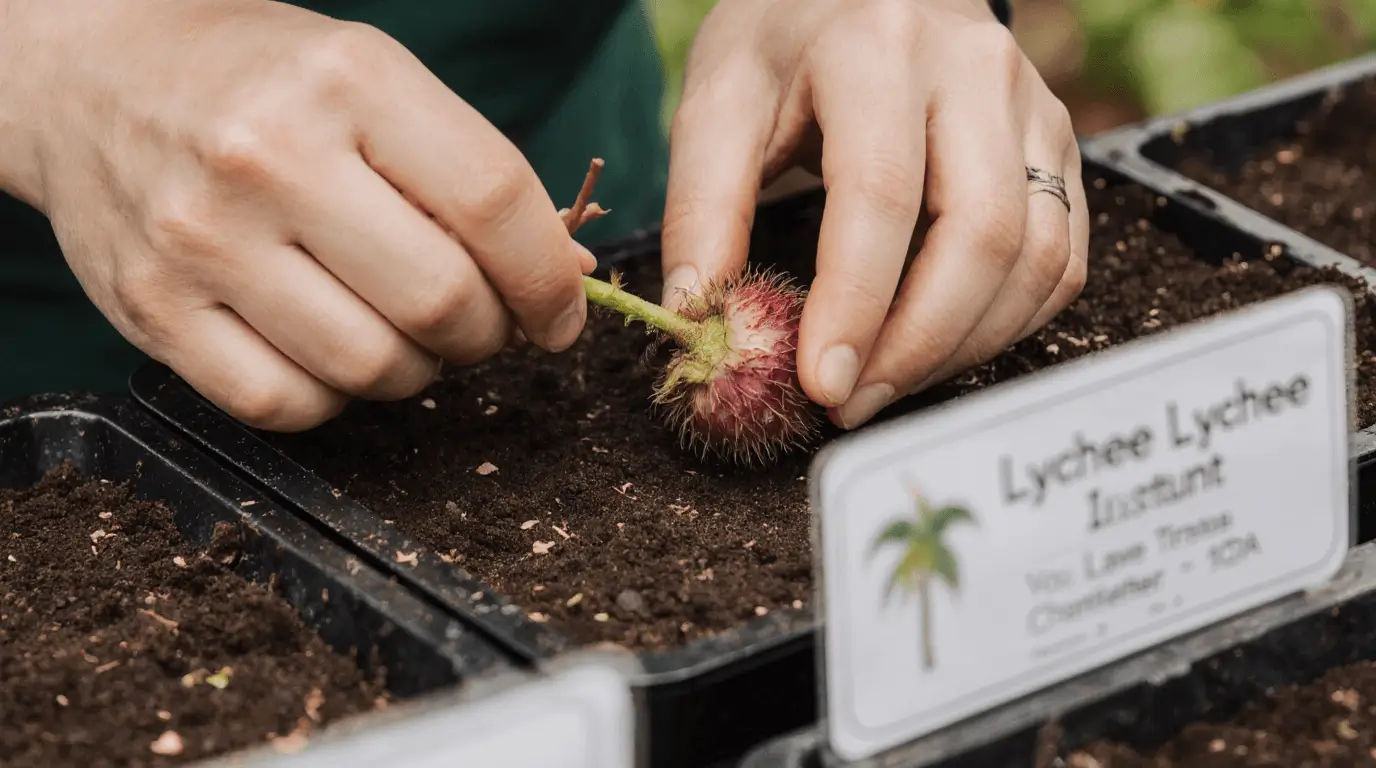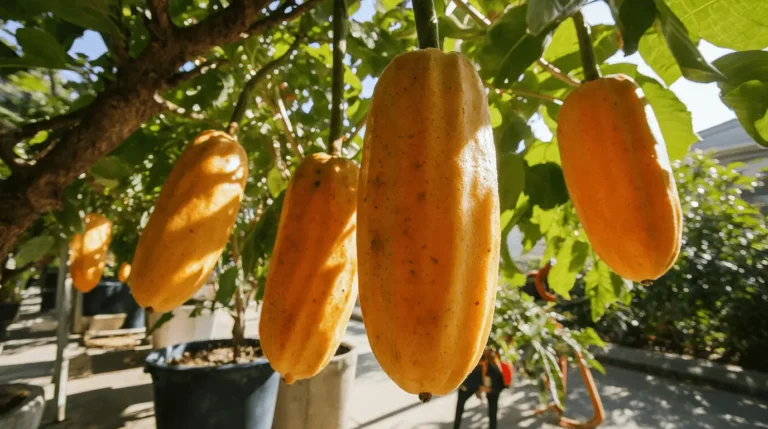10 Ways On How To Grow And Care For Lychee Fruit Tree
In my garden, a lychee fruit tree is a tropical plant with a refreshing, sweet, floral taste, and rose-red, bumpy skin over translucent white flesh—a favorite that came from Asia and now thrives in backyards, gardens, and warm climates across many areas. To grow strong and stay attractive and popular, keep trees pruned for easier care and timely harvest; healthy trees produce plenty of lychees, and a well-shaped canopy helps them bear more tasty summer crops even when they get tall. This short guide shares what works for me in Florida, kept detailed yet easy to follow so beginners can succeed in identifying the right lychee tree zone for their garden.
Start from seed or young litchi plants: seeds should be stratified in the refrigerator to break dormancy, then sown in warm soil and given a substantial mulch layer for steady moisture through the years. Choose sunny spots, water deeply, and feed lightly; keep wind protection, check drainage, and train branches pruned just after harvest to manage height and light—simple steps that help trees produce reliable crops in hot summers and mild winters common to Florida.
Read Also: Tropical Fruit Trees: Grow Exotic Paradise at Home

Growing a Delicious Lychee Tree in Your Yard
In my landscape, the lychee tree stands out as one of the most rewarding tropical trees to grow. Its sweet, floral flavor makes the fruit irresistible, and every harvest reminds me how patience over the years pays off beautifully.
Follow simple tips for variety selection, proper planting, regular watering, and balanced fertilizing to keep your fruits thriving. With the right growing care, your garden will turn into a lush paradise filled with vibrant lychee delights.
Pick the Best Lychee Variety
When choosing a lychee variety, make sure it tolerates your regional temperatures and grows well in USDA zones 10-11 where hot summers support healthy trees. The Brewster type thrives in cooler climates, while Sweetheart loves tropical heat and produces richly flavored fruit. The rosy Mauritius variety bears abundantly, making it a favorite among gardeners who enjoy color and taste together.
Plant in a Sunny, Sheltered Area
Lychees require about 6-8 hours of direct sun daily, so choose an open spot that allows full light. Provide shelter from wind to prevent tattered leaves and broken branches, keeping them strong and healthy. Always locate trees away from pools or sprinklers spraying chlorinated water, which often damages the delicate foliage.
Prepare the Soil Thoroughly
For healthy lychee fruit trees to thrive, start with organically rich, well-draining soil that has a pH between 6.0-6.5. Dig in compost or well-rotted manure before planting, and create a wide hole but avoid going deeper than the root ball. Keep proper space of about 15-20 feet apart to allow air circulation for steady growth.
Water Regularly for Healthy Growth
New lychee trees need about 1-2 inches of water each week during spring and summer for proper establishment. Utilize drip irrigation or a soaker hose to avoid fungus and keep roots evenly moist. In fall and winter, water less, allowing the soil to dry slightly between watering for balanced growth.
Apply Balanced Fertilizer
Feed young lychee trees quarterly from late winter through summer using an organic fruit tree fertilizer to maintain strong fertility and steady maturity. As the season progresses, reduce nitrogen levels pre-harvest so more energy supports ripening fruit instead of excessive leaves growth.
Read Also: Troubleshoot Common Fruiting Issues
Prune for Shape and Airflow
When you prune lychee fruit trees while they are young, you encourage proper branching and a strong structure that helps maintain a manageable height of around 20 feet. Remove inward-growing limbs or branches that rub together to allow better airflow, which prevents disease. Always cut back long shoots invading other space, keeping the canopy open and healthy for even sunlight exposure and balanced growth.
Check Weekly for Pests
Watch closely for tiny red spiders and eriophyid mites that leave silver patches on leaves and weaken the plant. Apply insecticidal soap immediately before populations explode, and set traps to help reduce annoying fruit flies during the harvest season. Always pick fallen fruits promptly to limit future pests and maintain healthy growth.
Read Also: Pest and Disease Management
Prevent Disease with Space and Sanitation
Healthy lychee trees rarely face serious disease issues, but fungus can appear when circulation is poor or excess moisture builds up. Keep lawn irrigation directed away from the tree trunk and foliage, and remove thick growth inside the canopy to let breezes flow freely. Always disinfect pruning tools between cuts using isopropyl alcohol to prevent infections from spreading.
Know When Lychees Are Ready to Eat
When lychees on the tree change from green to red, they are close to being ripe, often showing a rosy or tan tone with a deeper hue depending on the variety. Gently squeeze a few fragrant fruits—those that slightly give are perfect for picking. Always use shears to avoid tearing the skin, as that allows decay and organisms to enter and spoil the fruit.
Protect Roots from Winter Cold
In cooler zones, it’s important to insulate lychee roots from hard freezes by making a mound of about 6-8 inch layer using wood chip mulch spread over the soil up to the dripline. Do this after fruiting finishes, and let the compost settle in place by spring for natural warmth. For added protection, wrap trunks of younger trees with breathable tree material if extreme cold or wind occurs, keeping them safe through winter.
Read Also: 7 Proven Tips for Perfect Tamarind Plant Care
Grow More Trees from Seed or Cuttings
To propagate new lychee fruit trees, start with fresh seed, air layers, or grafting to preserve genetic continuity. I often collect seeds from the healthiest tree’s fruits, then stratify them refrigerated for about 30 days before sowing. Keep the soil moist, maintain even moisture, and protect seedlings from direct sun while they germinate steadily.

With attentive pruning, pest management, winter care, and consistent propagation techniques, your homegrown tree will thrive and fruit deliciously for many years. Choose grafted saplings for faster results, ensure proper inputs, and browse a wide selection online to add a tropical flavor to your landscape.
Conclusion
Growing lychee trees from seed or cuttings is a rewarding journey that brings both learning and tropical beauty to your garden. With patience, the right propagation techniques, and consistent care, your homegrown fruit trees can thrive and produce deliciously sweet harvests for many years. Whether you start from grafted saplings or nurture seedlings, every stage adds value to your landscape and deepens your connection with nature.
Read Also: Gardening & Plant Care Guide for Thriving Plants

Read Also: 5+ Delicious Types of Papaya You’ll Want to Try Today
FAQs
- How long does it take for lychee trees to bear fruit?
Lychee trees usually take about 4–5 years if grown from grafted saplings, and around 8–10 years if grown from seed. - Can I grow lychee trees in cold climates?
Yes, but you must protect the roots and trunks from frost. Use mulch and wrapping methods to shield them during winter. - How do I keep lychee seedlings healthy?
Provide even moisture, partial sun, and protect from strong winds. Avoid overwatering, which can cause root rot. - Is grafting better than growing from seeds?
Grafting ensures genetic continuity and gives faster fruiting results compared to seeds, which can vary in quality and take longer. - What kind of fertilizer is best for lychee trees?
Use a balanced organic fertilizer high in potassium and low in nitrogen to promote strong fruiting and healthy foliage.





[…] Read Also: 7 Secrets to Growing a Lychee Tree in Your Zone […]